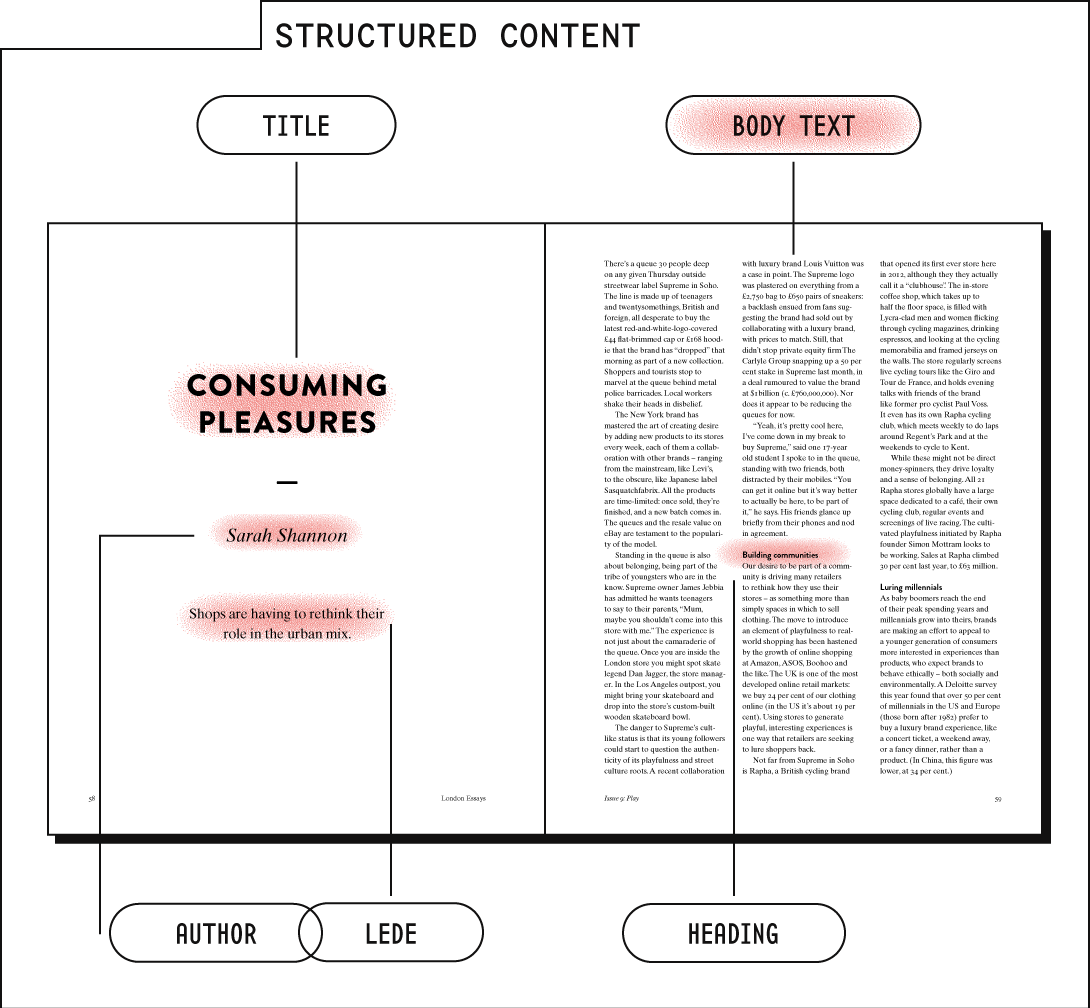Screens, Research and Hypertext
Powered by 🌱Roam GardenModular Content
Meaning entails formatting, not the other way around.
What if we started thinking about what various pieces of content do rather than where they go? After all, documents already have functional chunks. They’re the things we call out with formatting.

In most documents, formatting is the only clue to function. So reusing content from a document typically requires a human being to determine what can be reused where.
Moreover, many of your websites are run on content management systems (CMSs) that also rely on the document model. (I’m looking at you, WordPress.)

By default, WordPress dumps pretty much everything but your title into that big body field—though most think tanks are getting better about that. It’s basically a document for the web. You can even get a plugin to make your WordPress WYSIWYG editor look like an old version of Microsoft Word. (Don't do that.)
A CMS built around content-as-documents faces the same problems as content in literal documents—you need human intervention and a lot of cutting-and-pasting to reuse anything.
Things don’t have to be this way.
Your CMS connects to a database, which is sort of like a really fancy spreadsheet. Built properly, your CMS will store each functional piece of content—an attribute in CMS lingo—in its own spreadsheet column. Better still, it’ll give each column a name that tells the CMS what that content does. That opens up a whole new world of possibilities.
For more context
If everything is a document, we're all going to drown.
What to read next
Modular content is content that is built for reuse.
Other items of interest
HTML shouldn't (just) be about formatting. It's about creating hypermedia.
Documents are a limited—and limiting!—way of thinking about content on the web.
Attributes aren't the only kinds of things we can store in a database.
Referenced in
Back to WonkComms and Superheroes
This is the content everywhere model. It’s one in which you create modular content that you can remix and push out across multiple channels. No single output is a “main” thing. Rather, each blog post, each tweet, each infographic, each op-ed tells part of the story.
Transclusion and URLs
Transcluding at anything below the page level requires more granular URIs. And that, in turn, requires writing content that is more modular in the first instance.
Create Once, Publish Everywhere
When you write and store your content modularly, you can reuse it in all sorts of interesting ways. You might hear this referred to as “create once, publish everywhere” (shortened to “COPE”) or “single-source publishing.” Those are both pretty dry and technical.
Essentials of a Better Web
When you've stored content as ideas, you can easily shuffle those ideas around. A block of content held on a digital card can be moved around the screen, combined and recombined with other items, stacked a bit like Lego bricks.